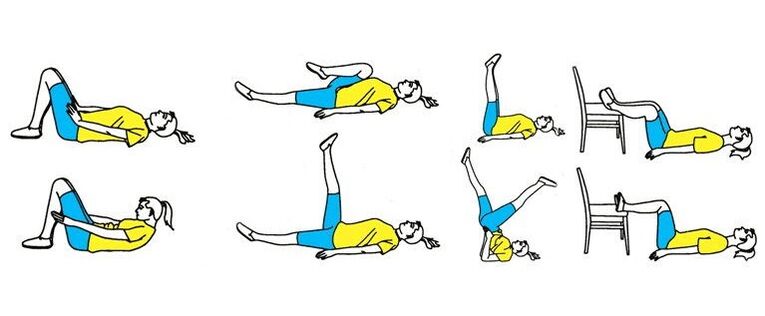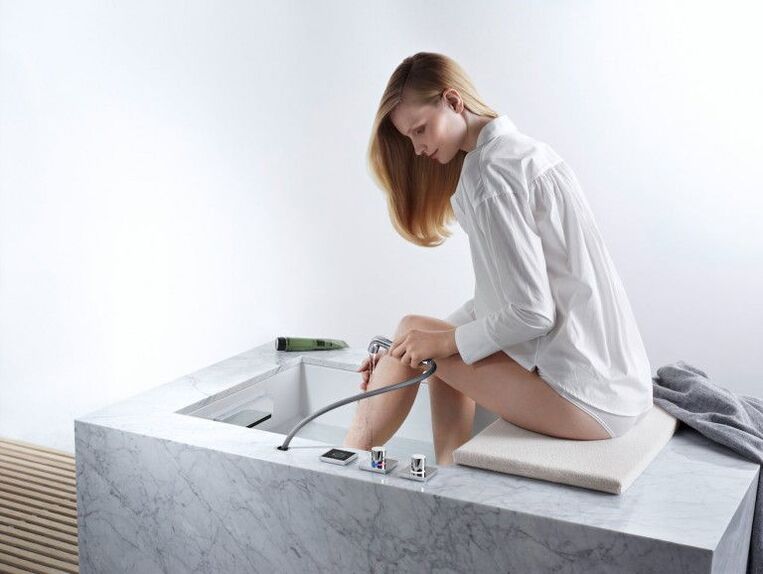Among the many problems faced by modern women, not the last place is occupied by varicose veins on the legs. Regularly performing simple exercises for varicose veins of the legs can help in the early stages of the condition. Of course, the problem can be solved cardinal - by the method of surgical intervention, but often therapeutic physical activity will be enough, it all depends on the degree of development of the disease. Before starting to fight varicose veins, it is recommended to learn more about this disease and only then decide on the need for exercise therapy.

Types of varicose veins
Medicine divides varicose veins into:
- congenital;
- acquired.
Both forms are expressed in the expansion of the veins in the legs. Acquired varicose veins are most often seen in women whose work is associated with a large or prolonged load on the legs. For example, the disease often develops between salespeople and teachers. These professions involve a woman standing for a long time, therefore, the load on the legs may not be excessive, but constant, which in the end often ends in the appearance of pain and the development of varicose veins.
Congenital varicose veins are inherited from the grandmother to the mother and from her to the daughter. If the older generation suffers from varicose veins, then the probability of their manifestation in the daughter is very high. To prevent the appearance of hereditary varicose veins of the legs, special exercises for varicose veins of the lower extremities help. Performing physical exercises regularly, a woman can not only prevent the onset of the disease, but also reduce its external manifestations with the expansion of the veins in the legs.
It happens that varicose veins in a woman are not yet noticeable, but there is a risk of their occurrence. In this case, regular practice of certain physical gymnastics is recommended. The same exercises are also suitable for the identified initial expansion of the veins.
You should know that gymnastics for varicose veins of the lower extremities includes elements that require you to lie on your back with your legs up. In addition to fighting varicose veins, the proposed set of exercises helps to strengthen the abdominal muscles.
Prevention and treatment of leg veins
With the risk of the onset of the disease and in the early stages of the disease, the following set of exercises is recommended.
- Slowly lift the leg as you exhale, followed by holding it vertically. This is followed by a slow lowering of the leg as you inhale. In the first exercise, you may feel some tension in the lower leg, which is given by a slight squeeze in the foot. The exercise is performed up to twenty times and repeated four approaches, while the legs alternate. The meaning of the exercise: when the leg is raised, blood flows out of the pockets of the veins more actively, and when the leg is lowered, the veins are strongly filled with blood. This type of leg vein training works effectively against varicose veins.
- Lying down, make circular movements with your feet. The foot movement should be smooth and unhurried, while the lower leg will stretch in one direction. Initially, the leg stays on the floor, but after a few movements, it can be lifted slightly and the exercise continued, keeping the leg in the weight. This foot movement is good for blood flow.
If you are overweight, the load on the walls of the veins increases significantly, and this undoubtedly causes the development of varicose veins. Doctors often recommend taking blood-thinning medications to treat varicose veins, which make the work of the veins easier. There are many of these drugs, so it is categorically not recommended to take them on their own. It is best to have an experienced doctor select the necessary funds for you.
In the prevention of varicose veins, it is most important to strengthen the muscular walls of the veins, in which they are relatively thin. This can be achieved not just by doing physical exercises or going through an exercise therapy complex. Against the weakening of the walls of the veins, a regular contrast bath can help perfectly. Alternating exposure to hot and cold water perfectly trains the leg veins.

There are simple therapeutic exercises to work on standing against varicose veins.
| Shares | The amount | To benefit |
|---|---|---|
| While standing, transfer your body weight from your heel to your toe and vice versa. | 10-12 times | This exercise makes the lower leg work, resulting in a more active movement of blood in the veins; |
| Standing, stand up on tiptoe and slowly lower to full foot. | 10-12 times | This exercise, in addition to developing the veins, allows you to strengthen the leg muscles and improve the shape and beauty of the legs. |
Work that a woman has to constantly sit at can also lead to the development of this disease. In this case, a slightly modernized lift of the toes will help. The only difference with the exercise recommended above is that you need to drop your heels as sharply as possible and cannot lift your heels too high.
Running, cycling or playground?
Physical therapy exercises can recommend many different exercises to train your veins. Unhurried running, jumping rope and other exercises will work perfectly against varicose veins. Cycling also helps a lot, but there's a little subtlety here. Leg vein training will only be more active if the seat is as high as possible so only your toe can reach the bottom pedal. When riding with this bike setup, the lower leg is actively lowered, increased pressure is applied to the veins, which makes the blood circulate better.
If you find that with the expansion of the leg veins they began to manifest themselves clearly, it is better not to delay, but immediately consult a doctor. He will be able to provide you with an effective exercise plan if needed. Only the right exercises will help keep your leg veins in perfect shape.
Among the various programs and sets of exercises aimed at fighting varicose veins, Dr. Bubnovsky, whose clinic studies kinesiotherapy as a means of combating various diseases. To prevent varicose veins and treat the disease that has already appeared, specialists at the clinic develop individual exercise programs that take into account the individual characteristics of the patient.























